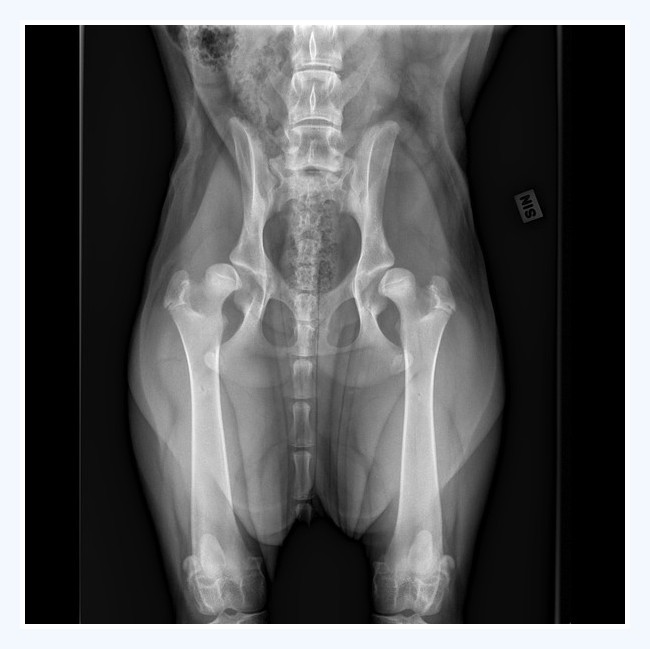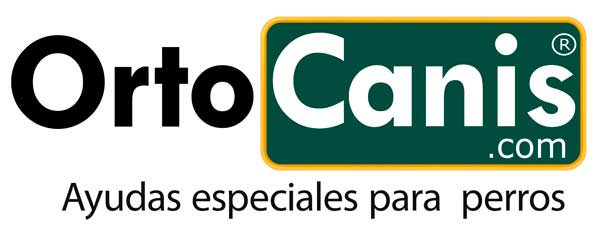What is hip dysplasia?
Hip dysplasia is an alteration in the hip joint due to an incongruity between the pelvis and femoral head.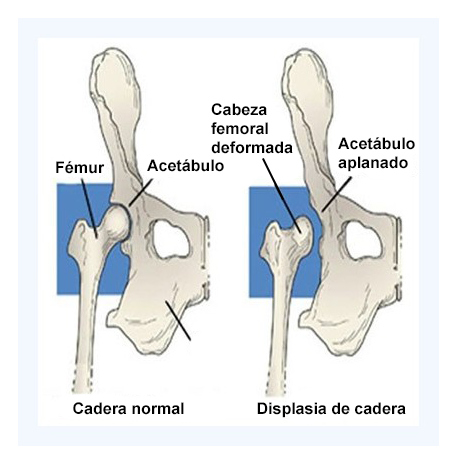 The acetabulum of the pelvis is deformed and as such the head of the femur “dances” within it. This causes stress, friction and inflammation, resulting in pain, osteoarthritis and weakness. The dog then decreases its activity, losing vital muscle mass necessary for stabilizing the joint, thus worsening the problem.
The acetabulum of the pelvis is deformed and as such the head of the femur “dances” within it. This causes stress, friction and inflammation, resulting in pain, osteoarthritis and weakness. The dog then decreases its activity, losing vital muscle mass necessary for stabilizing the joint, thus worsening the problem.
Risk factors
This condition is more frequently observed in larger-breed dogs and certain breeds are more predisposed to it, like the German Shepard or the Labrador Retriever (see prevalence tables based on breed).
It has a strong genetic component (it is passed on from parents to children), however the onset and severity of the symptoms largely depend on the animal’s living conditions (environmental factors). The most important environmental factor is the growth rate: large-breed animals that grow too fast (normally due to an excessive intake of food), have unequal growth in their bones, tendons and muscles, which will then also have to support more weight than normal when they are not yet fully developed: the joints will deform or not form properly. Excessive and high impact exercise (jumps, stairs,…) during growth is another risk factor.
Symptoms
The warning signs usually appear after 5 or 6 months (sometimes we see them before). We can see that the dog: feels bad (stretches one of its limbs), supports less weight on the hind legs and may even have difficulty standing upright. They might experience pain after intense exercise or slip often. We can also notice mood changes as a result of the pain. It is also very common for them to walk with a rocking motion or to run “like a rabbit”, jumping with the hind legs. Sometimes the symptoms disappear or decrease once growth has stopped, with only the rocking motion of the hips when walking remaining.
Diagnosis
The diagnosis is made with an X-ray and is usually done under sedation since the hips need to be extended which can cause discomfort for the animal and poor image quality due to movement. It is considered that in order to fully rule out hip dysplasia the X-ray should be performed once the dog is at least one year old. Not much time is usually needed to confirm it.
The “severity” of the X-ray does not always correspond with the severity of the symptoms, since what could be causing most of the pain is the synovitis (inflammation of the joint) and not the joint deformation itself. As such, we see dogs that have an X-ray showing major alterations with hardly any symptoms, and vice versa.
Treatment
There is no treatment that cures hip dysplasia. A combination of different measures is usually taken that enables us to greatly improve the animal’s quality of life:
Maintain an optimum weight: this is possibly the most important factor. The less weight the joints have to support, less pain and less osteoarthritis will be generated. Furthermore, it has been shown that an excess of body fat causes the body to stay in a chronic inflammatory state, worsening the symptoms greatly. The ideal situation would be to maintain the dog slender, but with an appropriate amount of muscle mass. For this reason we should ensure that the dog continues to get regular exercise.
Surgical techniques: excision of the pectineus muscle, triple hip osteotomy, titanium prosthesis, excision of the femoral head, these are not considered curative however they can be a huge help in returning the joint to its anatomically correct form. Consult with your vet.
Use of anti-inflammatories: when there is significant pain, we use nonsteroidal anti-inflammatory drugs (NSAIDs) such as meloxicam or firocoxib. Like most drugs they have some 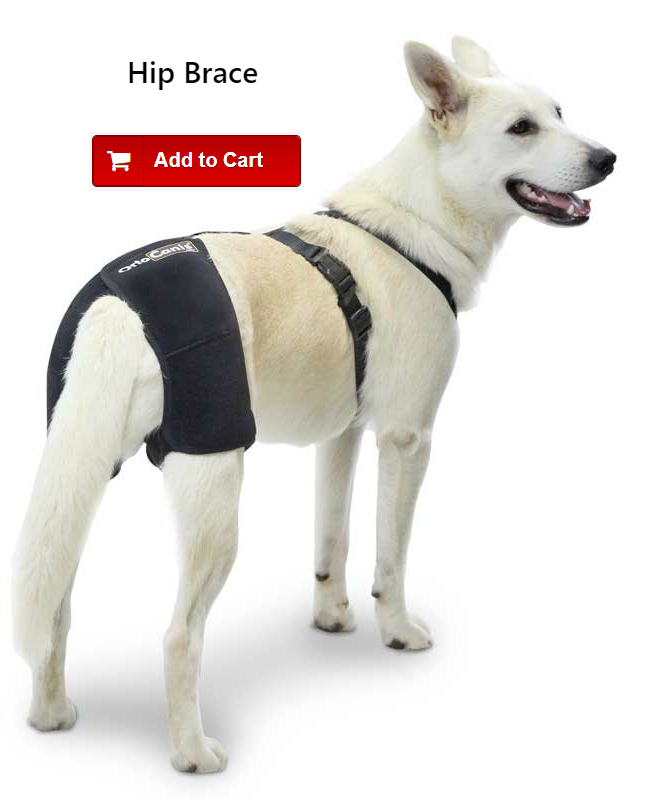 undesirable effects, such as gastric and intestinal discomfort as well as being contraindicated in cases of severe liver or kidney disease. IMPORTANT NOTE: Never use anti-inflammatories for human use in dogs, since they can have serious side effects to their health. There are also natural anti-inflammatories that, at the right dosage, do not have any known side effects. This is the case of Devil’s Claw or the Omega 3 fatty acids. While the effect is not quite as powerful as the previous ones, they can significantly help mild cases if administered chronically and allow us to reduce the dose of NSAIDs in the more severe cases.
undesirable effects, such as gastric and intestinal discomfort as well as being contraindicated in cases of severe liver or kidney disease. IMPORTANT NOTE: Never use anti-inflammatories for human use in dogs, since they can have serious side effects to their health. There are also natural anti-inflammatories that, at the right dosage, do not have any known side effects. This is the case of Devil’s Claw or the Omega 3 fatty acids. While the effect is not quite as powerful as the previous ones, they can significantly help mild cases if administered chronically and allow us to reduce the dose of NSAIDs in the more severe cases.
Use of joint protectors: long-term, the use of chondroprotectors will enable us to slow the progression of the osteoarthritis and reduce the use of NSAIDs. There are no undesirable effects for the animal and they can be used in older dogs, puppies or other dogs with serious diseases.
Orthopedic products: such as hip supports. They help to stabilize the joint and provide the area with heat, thereby reducing the progression of the osteoarthritis and pain. Recommended for mild-moderate cases. They can be worn for much of the day and they greatly enhance the animal’s mobility. There are also support harnesses that help the dog support part of its weight.
Physiotherapy: you can use electrostimulation, ultrasounds, laser, massage, passive movement therapy (movement of the joints aided by the physiotherapist), stretching, hydrotherapy on an underwater treadmill and low impact exercises. We are trying to alleviate the pain, strengthen the muscles in the hindlimbs and increase the hip’s flexibility. Here you can find a complete list of rehabilitation centers in Spain.
Special mattresses: an animal’s rest is very important, since hip dysplasia and osteoarthritis is heightened “when cold”, in other words, when the dog becomes active after having been resting for some time. We should use orthopedic beds that prevent the dog from supporting all of its weight on the protruding parts of the body (namely, the joints). There are chopped viscoelastic mattresses that allow for an equal distribution of the animal’s weight, avoiding the body’s pressure points.
Heat: heat, either in the form of blankets, jackets, or infrared treatments, reduces pain significantly or speeds up recovery. We should also protect the dog from humidity.
Wheelchairs: 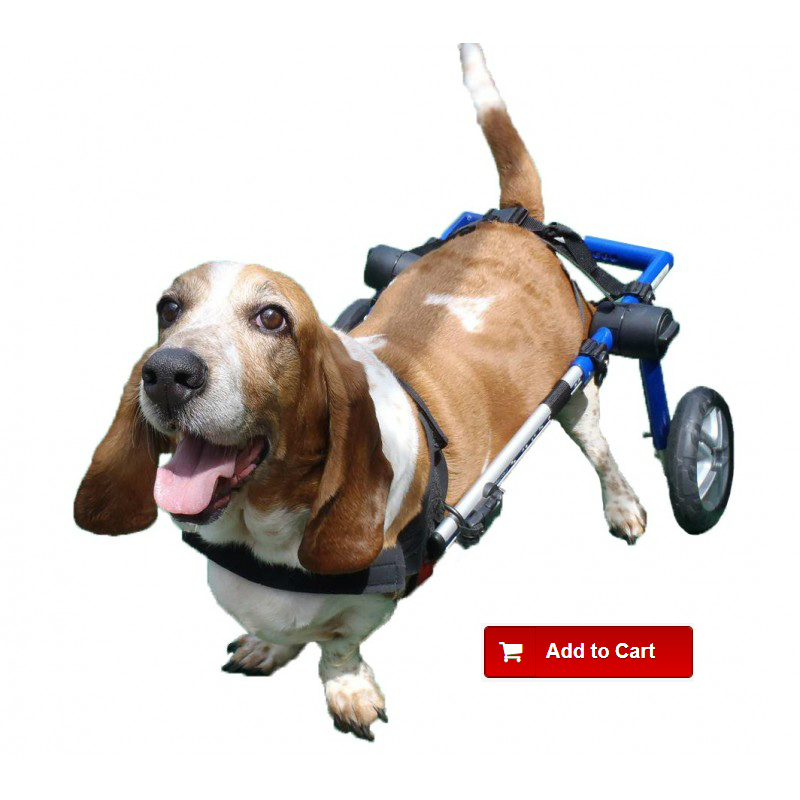 if the animal has difficult standing up or carrying out a normal activity, wheelchairs or carts can restore independence. The chairs enable them to stay active since the dog can continue moving the hindlimbs freely, but without supporting all of its weight on them. They are able to walk, run, do their business and even climb stairs again.
if the animal has difficult standing up or carrying out a normal activity, wheelchairs or carts can restore independence. The chairs enable them to stay active since the dog can continue moving the hindlimbs freely, but without supporting all of its weight on them. They are able to walk, run, do their business and even climb stairs again.
Prevention
This is especially important during the animal’s growth. Although it is normally genetically predisposed, we can help minimize the development of the disease. The most important factor is the growth rate. It should be constant, without peaks. There are growth tables that can help us monitor the weight, keeping in mind that the curves will be different based on the adult weight the animal will reach. On this basis, we vary our animal’s food intake, adapting it to each individual. It is very important to provide suitable dog food based on size, especially in large/giant-breed dogs, since normal dog food provides an excess of calories.
The second factor is exercise. It should be mellow, regular, and of low impact. We should limit jumps and stairs. The best surface for walking is compacted sand found in parks and in the forest, we should avoid long walks on asphalt or on a sandy beach, since this will “overload” the joints a lot. Moderate swimming helps to exercise with less impact on the joints and to be able to make wider movements of joints thus providing flexibility ..
An early diagnosis is important for beginning treatment as soon as possible. In predisposed breeds, or if we see any of the symptoms listed above appear, we should consult with our vet.
The use of chondroprotectors (also called joint protectors or “shark cartilage”) is highly recommended in growing animals that have or could have hip dysplasia in the future. They are nutritional supplements without undesirable effects that can be administered from a young age. Even if they do not prevent hip dysplasia itself, they do prevent the onset of osteoarthritis, which is ultimately what ends up inflaming the joint capsule causing pain and weakness. The most common chondroprotetors are made from a base of Sulfate Chondroitin and Glucosamine. The most advanced have “cut” molecules that maximize intestinal absorption thus increasing the amount reaching the cartilage, where they will take effect.
Laura Perez Vila

